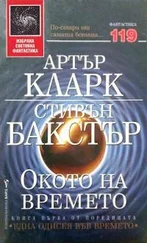'He found a rip in the hull?'
'Yeah. In a post room somewhere below. A rip, as if the boat had collided with something. And he looked out -'
Sick Note had found Liverpool flattened. Like the Blitz but worse, he said. Mounds of rubble. Like the surface of the Moon.
'… And he saw a sky glowing full of shooting stars,' Lightoller said.
It was one of Sick Note's favourite drunken anecdotes.
'Of course,' said Lightoller, 'this old scow probably wouldn't
have survived any sort of collision. The hull plates are made of brittle steel. And it was just too fooking big; it would have shaken itself to pieces as soon as a few rivets were popped -'
Lightoller can be an anorak sometimes. But he used to be an engineer, like me.
Correction. He is an engineer, like me.
At last, on F Deck, we found the Turkish Bath.
Sick Note had made this place his own: a few sticks of furniture, the walls lined with books, posters from rock concerts and Hammer horror movies and long-forgotten 1960s avant-garde book stores plastered over the crimson ceiling. I found what looked like a complete run of the International Times. There was even a kitchen of sorts, equipped with antiques: a Hoover Keymatic washing machine and a Philco Marketer fridge-freezer and a General Electric cooker. Sick Note always did have an uncanny supply of artefacts from the 70s, or late 60s anyhow, in miraculously good condition, that the rest of us used to envy. But he'd never reveal his source.
And there were records here too: vinyl LPs, not CDs (of course), leaning up against each other all the way around the edge of the floor like toppling dominoes; the stack even curved a little to get around the corners. The odd thing was, if you looked all the way around the room, you couldn't see how they were being supported - or rather, they were all supporting each other. It was a record stack designed by Escher.
Lightoller bent to look at the albums. 'Alphabetized.'
'Of course.' That was Sick Note.
'Let's find the Beatles. B for Beatles…' He grunted, sounding a little surprised. He pulled out an album with a jet-black sleeve. 'Look at this fooking thing.' He handed it to me.
The cover was elementally simple: just a black field, with a single word rendered in a white typewriter font in the lower left-hand corner.
God.
Just that, the word, and a full stop.
Nothing else. No image. Not even an artist name on the cover. Nothing on the spine or the back of the sleeve; no artist photos or track listings, or even a copyright mark or acknowledgement paragraph.
The record slid into my hand inside a plain black-paper inner
sleeve. And when I tried to pull out the record itself - reaching inside to rest my fingers on the centre label - the sleeve static-clung to the vinyl, as if unwilling to let it go.
The vinyl was standard-issue oil black. The label was just the famous Apple logo - skin-side up on what was presumably Side One, the crisp white inner flesh on Side Two. Still no track listing - in fact, not even a title.
I held the album by its rim. I turned it this way and that; the tracks shone in the light.
Sometimes I forget how tactile the experience of owning an album used to be.
'Look at that fooking thing,' breathed Lightoller. 'A couple of scratches at the rim. Otherwise perfect.'
'Yeah.' An album that had been played, but cared for. That was Sick Note for you.
We exchanged glances.
Lightoller lifted up the glass cover of Sick Note's deck, and I lifted on the album, settling it over the spindle delicately. Lightoller powered up the deck. It was a Quad stack Sick Note had been working on piece by piece since 1983. No CD player, of course.
When the needle touched the vinyl there was a moment of sharp crackle, then hissing expectancy.
The music came crashing out.
And that was how we found ourselves listening to a puzzlingly different John Lennon.
Side One's last track was the big song McCartney used to close Ram: 'Back Seat of My Car'.
'Another song they tried for Let It Be,' Lightoller said. 'And -'
'Shut up a minute,' I said.
'… What?'
'Listen to that.'
In place of the multi-track of his own and Linda's voices that McCartney had plastered over his solo version, the song was laced with exquisite three-part harmonies.
Beatle harmonies.
'Lightoller,' I said. 'I'm starting to feel scared.' Lightoller let the stylus run off, reverently.
I got up from the carpeted floor and walked around the room. There were framed photos and news clippings here, showing scenes from the ship's long history.
I couldn't mistake the pounding piano and drum beat that started Side Two.
'"Instant Karma",' I said.
'A single for Lennon in February 1970.'
'In our world.'
'Great fooking opener.'
Then came a Harrison song, a wistful, slight thing called 'Isn't It A Pity'.
Lightoller nodded. 'Another one they tried out in early 1969, but never used. It finished up on George's first solo album -'
The next track was 'Junk', a short instrumental McCartney wrote when they were staying with the Maharishi in India. It sounded like the theme of a TV show about vets. But it was sweet and sad.
We just listened for a while.
With the gentle guitars playing, it was as if Sick Note was still there, in this cloud of possessions, the very air probably still full of a dusty haze of him.
… Here was the ship in dry dock in Belfast after her maiden voyage, with that famous big near-miss scar down her starboard flank. Here she was as a troop carrier in 1915, painted with gaudy geometric shapes that were supposed to fool German submarines. Here was a clipping about how she'd evaded a U-boat torpedo, and how she'd come about and rammed the damn thing.
'"Old Reliable",' I said. 'That was what Sick Note used to call her. The nickname given her by the troops she transported.'
'He loved this old tub, in his way,' said Lightoller.
'And he did love his Fabs.'
That was Sick Note for you.
The fourth track was 'Wah Wah', another Harrison song, a glittering, heavy-handed rocker with crystal-sharp three-part harmony.
Lightoller nodded. 'Harrison wrote this when he stormed out during the Let It Be sessions. He kept it back for his solo album -' 'In our world.'
'Yeah. I guess he brought it back to the group, in the God world…' Lightoller was sounding morbid. 'But there was no fooking twelfth album, was there? This must be a fake. Or an import, or a compilation, or a bootleg. Once Allen Klein and Yoko got involved they were all too busy suing each other's fooking arses off.'
I picked up the album sleeve. For a possession of Sick Note's, it was surprisingly grubby. Specked with some kind of ash. I felt obscurely disturbed by Lightoller's loss of faith in his own bullshit. 'But all the Allen Klein stuff started in the spring of '69. Even after all that, they made another album together.'
'Abbey Road.' Lightoller nodded, and I thought the spark was back in his eyes. 'Yeah. They might have hung around for one more try. But something would have had to be different.'
I kept roaming the room.
More clippings, of how White Star had merged with Cunard in 1934, and the old ship lost out to newer, faster, safer vessels. She was almost sold for scrap - but then was put to work as a cargo scow in the southern Atlantic - and then, after Michael Heseltine parachuted into Merseyside after the 1981 riots, she was bought up and bolted to the dock, here at Liverpool, and refitted as a hotel, the centre of what Heseltine hoped would become the regeneration of the city. Fat chance.
'So,' I said, 'your theory is that this album comes from an alternate world where somebody shot Allen Klein.'
Lightoller shrugged. 'It might have been something bigger.'
Читать дальше
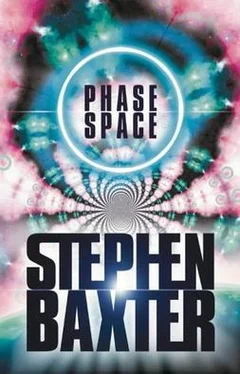
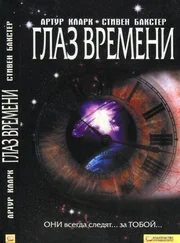


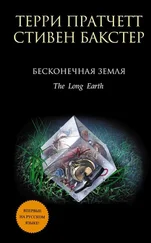
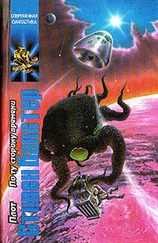

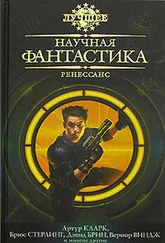
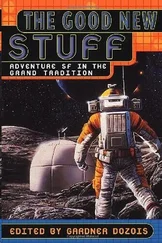
![Стивен Бакстер - Бесконечный Космос [litres]](/books/415680/stiven-bakster-beskonechnyj-kosmos-litres-thumb.webp)
